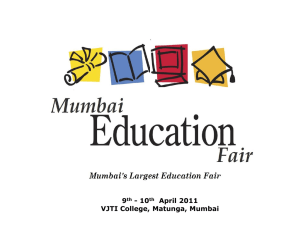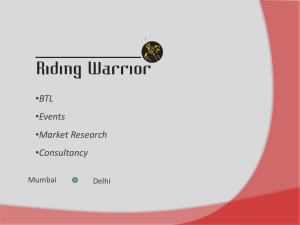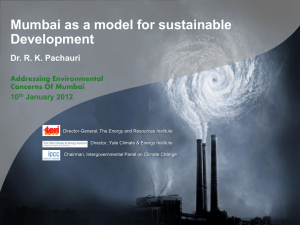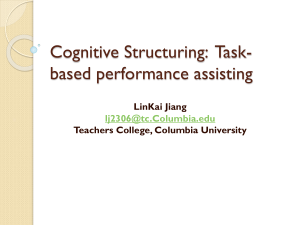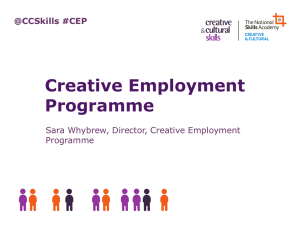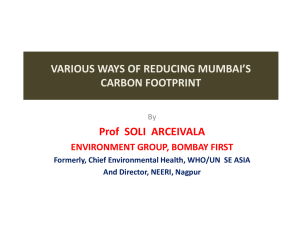Update CEP
advertisement
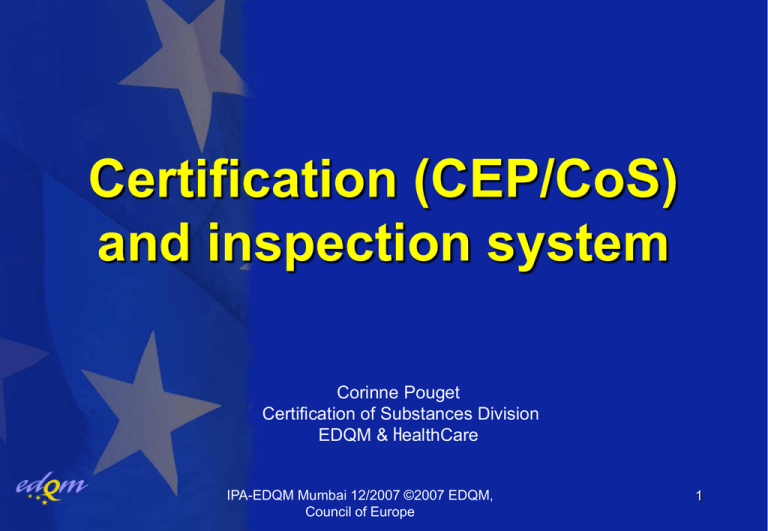
Certification (CEP/CoS) and inspection system Corinne Pouget Certification of Substances Division EDQM & HealthCare IPA-EDQM Mumbai 12/2007 ©2007 EDQM, Council of Europe 1 Overview • • • • Scope and running the system The EDQM inspection programme Update and key figures Perspectives 2008 IPA-EDQM Mumbai 12/2007 ©2007 EDQM, Council of Europe 2 Scope and running the system IPA-EDQM Mumbai 12/2007 ©2007 EDQM, Council of Europe 3 The Certification procedure • To show for a pharmaceutical substance: – Suitability of the Ph. Eur. Monograph to control the quality of a substance – Compliance with European regulatory requirements • Created in 1994, scope enlarged • Managed by EDQM • Harmonisation and centralisation of work IPA-EDQM Mumbai 12/2007 ©2007 EDQM, Council of Europe 4 Legal background • Directives 2001/83/EC and 2001/82/EC Ph Eur monographs are mandatory (specific and general) Need to demonstrate that a specific monograph is suitable to control the quality of the active substance Where there is a monograph in Ph Eur: - CEP ‘deemed to replace the relevant section of the module’ (3.2.S) - CEP holder must give assurance in writing to the applicant…no change since CEP granted by EDQM Prevention of TSE risks Demonstration of compliance preferably by a CEP IPA-EDQM Mumbai 12/2007 ©2007 EDQM, Council of Europe 5 Legal background (2) • Note for guidance : « Summary of requirements for active substances “(CHMP/QWP/297/97 rev. 1 EMEA/CVMP/1069/02): – CEP – ASMF – Full information in Marketing Application • Resolution AP-CSP(07) 1 of the Council of Europe: Procedural aspects IPA-EDQM Mumbai 12/2007 ©2007 EDQM, Council of Europe 6 Scope of the procedure • Substances covered by a specific PhEur monograph: Active, excipients, herbal drugs / herbal preparations • TSE risk products (SM, intermediates, reagents,..) • Not applicable for biotechnological products, products from human tissues, semi-finished or finished products, substances not included in Ph. Eur IPA-EDQM Mumbai 12/2007 ©2007 EDQM, Council of Europe 7 Scope (2) • Open to any manufacturer of active substance / expicient whatever the geographical origin • Centralised evaluation • Facilitates management of Marketing Applications • CEP accepted in all EP countries (36) + others (eg Canada, Australia, Morocco, Tunisia, New Zealand..) IPA-EDQM Mumbai 12/2007 ©2007 EDQM, Council of Europe 8 Confidentiality respected • CEP dossiers submitted directly by manufacturers – No applicant part (≠ ASMF) • Independently of any marketing application • Archived in a specific restricted area (EDQM) • Assessment on the premises of EDQM IPA-EDQM Mumbai 12/2007 ©2007 EDQM, Council of Europe 9 Who is involved? The different stakeholders and their roles are defined in Terms of Reference (PA/PH/CEP (01) 1 (see EDQM web-site) • Steering Committee – 11 members : representative bodies of EU and Ph. Eur countries • Assessors from 16 countries – About 80: chemical purity, TSE, toxicologists, for herbal drugs, sterility • Technical Advisory Boards (TAB) Chemical TAB TSE TAB • Certification Division IPA-EDQM Mumbai 12/2007 ©2007 EDQM, Council of Europe 10 Steering Committee • Appointment of assessors • Appointment of Technical Advisory Boards (TABs) and their Chairmen • Policy • Co-ordination of issues between the parties represented IPA-EDQM Mumbai 12/2007 ©2007 EDQM, Council of Europe 11 Technical advisory board’s (TAB) role • Assist assessors in case of doubt or disagreement • Technical guidance • Technical/scientific problems and seek advice for SC IPA-EDQM Mumbai 12/2007 ©2007 EDQM, Council of Europe 12 Assessors and Certification Division • Independent Assessors – evaluation of dossiers • Certification Division (EDQM scientific and administrative staff) – execution of the procedure and co-ordination IPA-EDQM Mumbai 12/2007 ©2007 EDQM, Council of Europe 13 The EDQM Inspection programme IPA-EDQM Mumbai 12/2007 ©2007 EDQM, Council of Europe 14 EDQM Inspection programme In application of Directive 2001/83/EC as amended (Article 111) and Directive 2001/82/EC as amended (Article 80): Mandate is given to EDQM (by EC) to establish an annual programme for inspections: – Manufacturing sites and brokers/distributors holding CEPs – Inspections inside and outside EU – Authorities notified of issues arising IPA-EDQM Mumbai 12/2007 ©2007 EDQM, Council of Europe 15 EDQM inspection programme • In line with EMEA ‘trigger document’: – – – – – If requested during assessment Sterile substances CEP held by brokers/traders/distributors To join a scheduled national inspection On justified requests from manufacturers • Adopted by the CEP Steering Committee IPA-EDQM Mumbai 12/2007 ©2007 EDQM, Council of Europe 16 Inspection progress • Lasts about 3 days • Team of 2 inspectors (of Ph. Eur member states) – Local inspector invited in non-Ph. Eur countries – EDQM representative • References: – ICH Q7A (+annex 1 of EU guideline for sterile subst.) and any other relevant GMP documents – Certification Dossier • Visit of the manufacturing facilities (process flow) • Study of production and QA management documents • Conclusions presented orally to the company at the end of the inspection IPA-EDQM Mumbai 12/2007 ©2007 EDQM, Council of Europe 17 Follow-up of an inspection • Report sent to the company • Company requested to address deficiencies • When positive inspectors’ opinion: EDQM Attestation of Inspection GMP certificate drafted by the EU leader inspector IPA-EDQM Mumbai 12/2007 ©2007 EDQM, Council of Europe 18 Rationale for suspension of CEPs • In case of major/critical GMP deficiency(ies) The company does not operate with a sufficient level of compliance • If major deviation(s) compared to the dossier Failure in the declarations and commitments Decision to suspend the CEP (board) and/or to block applications IPA-EDQM Mumbai 12/2007 ©2007 EDQM, Council of Europe 19 In case of suspension of a CEP • Holder (and manufacturer) notified: – justification, conditions for restoration, possibility for hearing • All relevant authorities informed, incl. EMEA Working groups + EU Commission • Public information: EDQM website + CEP on-line IPA-EDQM Mumbai 12/2007 ©2007 EDQM, Council of Europe 20 Frequent findings noticed by inspectors IPA-EDQM Mumbai 12/2007 ©2007 EDQM, Council of Europe 21 Frequent findings • Few critical deviations • About 25% were major deviations • In some cases combination of major/minor lead to a critical situation • 110 inspections carried out - 15 defective ! Selected sites, suspected to be non-compliant before inspection (eg. request from assessors) These figures cannot be extrapolated for a statistical overview of the status of the API sites IPA-EDQM Mumbai 12/2007 ©2007 EDQM, Council of Europe 22 Frequent deviations Based on 110 inspections incl. 9% traders , 3% TSE subst; sterile excluded) • • • • • • • • Process equipment (15%) Materiel management (12%) Documentation and records (11%) Buildings & facilities (10%) Quality management, Lab controls (8%) Production and IPC (7%) Compliance with CEP dossier (7%) Packaging & labelling, validation (4%) + = = = + - IPA-EDQM Mumbai 12/2007 ©2007 EDQM, Council of Europe 23 Frequent deviations • Process equipment: • • • • Identification of equipment insufficient Handling of closed equipment not satisfactory Cleaning procedures poorly defined or applied Non-calibrated apparatus for IPC • Material management: • Lack of qualification of suppliers • ‘Critical’ suppliers not well defined • Incomplete tracing-back of animal-origin materials IPA-EDQM Mumbai 12/2007 ©2007 EDQM, Council of Europe 24 Frequent deviations (2) • Documentation and records: - Lack of procedures, or insufficient details Weak management of the documentation system Contradiction between procedures and reality Incomplete batch records • Batch release: - Insufficiently described (written procedures) - Unclear (weakness of adequate checks) - Responsibilities unclear (no defined or inappropriate responsible person) IPA-EDQM Mumbai 12/2007 ©2007 EDQM, Council of Europe 25 Frequent deviations (3) • Buildings and facilities: – Areas not well defined for storage / quarantine / sampling – Inadequate protection of environment and production areas – Systems for air, steam, gases,… not sufficiently qualified and monitored • Quality Management: − − − − Role of QA inadequately resourced, insufficiently described Poor training and knowledge of the QA staff QA staff not involved in matters related to the quality of products Weakness of quality review IPA-EDQM Mumbai 12/2007 ©2007 EDQM, Council of Europe 26 Frequent deviations (4) • Laboratory: – Use of non registered methods – Standards not appropriate – Equipment not properly qualified/monitored • Production / IPC: – – – – Critical parameters insufficiently defined and controlled Equipment inappropriate or badly maintained Risks of contamination/cross-contamination Deviations not sufficiently documented, explained/investigated, no reporting system in place IPA-EDQM Mumbai 12/2007 ©2007 EDQM, Council of Europe 27 For sterile substances ≤ 10 % of inspections carried out 1. 2. 3. General aspects (clean areas, classification, monitoring) and processing (reduction of contamination, bio burden monitoring..) Personnel (training, clothing) and premises (pipes, air-flow and pressure, warning systems) Sterilisation validation, and filtration (integrity, re-use of filters) ! New policy for manufacturing sites on the CEP IPA-EDQM Mumbai 12/2007 ©2007 EDQM, Council of Europe 28 Update and Key figures IPA-EDQM Mumbai 12/2007 ©2007 EDQM, Council of Europe 29 Update on communication • Technical advice procedure (5 meetings in 2007) • Workshops • One-to-one meetings • EDQM website redesigned IPA-EDQM Mumbai 12/2007 ©2007 EDQM, Council of Europe 30 « CEP on-line »: is my CEP valid? www.edqm.eu IPA-EDQM Mumbai 12/2007 ©2007 EDQM, Council of Europe 31 Holder name (on CEP) Status Full CEP number Issue date of the current CEP IPA-EDQM Mumbai 12/2007 ©2007 EDQM, Council of Europe 32 Contacts with Licensing Authorities • Transmission of CEP evaluation reports – Upon request from an authority – In the context of a marketing application or any justified reason – Copy of the report(s) sent also to the holder – Reports from 20 dossiers sent in 2007, 44 in 2006 (incl. 15 for TPD/Health Canada) IPA-EDQM Mumbai 12/2007 ©2007 EDQM, Council of Europe 33 Update on workload and deadlines • Workload increases: – 320 new applications in 2006, 350 in 2007 – 500 revisions/renewals in 2006, 600 in 2007 Cum ulative num be r of applications re ce ive d T otal 500 T SE Doubles 451 450 Chemical 420 350 317 300 280 250 229 199199 200 191 233 239 218 200 284 322 305 297 277 270 250 249 155155 132132 150 109109 0 0 0 0 0 1994 1995 1996 1997 1998 1999 31 33 28 25 20 2007 0 2006 9 9 0 1993 39 18 18 0 1992 50 2005 48 48 52 52 2004 100 2003 number of applications 400 2002 2001 2000 0 IPA-EDQM Mumbai 12/2007 ©2007 EDQM, Council of Europe 34 Since beginning of procedure • • • • > 3300 applications > 2300 certificates granted > 650 substances > 560 manufacturers from 43 countries Repart it ion of manuf acturers by zone 03/2006 America 15% Pacific 1% Africa 0% Europe 47% Asia 18% Middle East 19% IPA-EDQM Mumbai 12/2007 ©2007 EDQM, Council of Europe 35 inspections 110 manufacturing sites inspected • in 22 countries (incl. China, India, Mexico, Canada, Europe) • 12 cases where major/critical deficiencies led to suspension of CEPs – Some being held by European wholesalers/distributors – cases where ‘sterile ’ grade was refused – some CEPs ‘restored’ already after re-inspection (CEP revised) IPA-EDQM Mumbai 12/2007 ©2007 EDQM, Council of Europe 36 Deadlines • Deadlines improved: – New appl.: up to 6 months delay in 2006, 34 months in 2007 – Renewals: up to 6 months delay in 2006, 34 months in 2007 – Intermediate revisions: on time in 2006 and 2007 – Add info: in time in 2006 (4 months) and in 2007 (3 months) IPA-EDQM Mumbai 12/2007 ©2007 EDQM, Council of Europe 37 Perspectives 2008 IPA-EDQM Mumbai 12/2007 ©2007 EDQM, Council of Europe 38 Perspectives for EDQM inspection programme • Programme to be continued in application of the EU mandate • Follow-up of defective inspections - reinspections • Enlarge experience – > 35 inspections/year – with other inspectorates, groups… – And other countries IPA-EDQM Mumbai 12/2007 ©2007 EDQM, Council of Europe 39 EDQM inspection programme (2) • Promote inspections of drug substances and establish an adequate system – Reinforce collaboration with EU/EMEA – Collaboration with European/international inspection working groups – System for harmonised decisions for sites/batches/MA concerned after suspension of CEPs IPA-EDQM Mumbai 12/2007 ©2007 EDQM, Council of Europe 40 Procedural aspects • Deadlines: – Reduce delay for new applications (be on time ??) – EDQM commits to treat RQs without changes on time from 01/01/2008 • Electronic submissions: – Instructions for applicants to develop electronic applications – Prepare for e-CTD IPA-EDQM Mumbai 12/2007 ©2007 EDQM, Council of Europe 41 Revision of CEPs • Revise the system to reduce administrative work, in cooperation with EMEA QWP: – Define minor changes which will not lead to a revised CEP after approval – Access to CEP database for Authorities (history of revisions,..) • Wait for revision of EU Regulation IPA-EDQM Mumbai 12/2007 ©2007 EDQM, Council of Europe 42 THANK YOU FOR YOUR ATTENTION IPA-EDQM Mumbai 12/2007 ©2007 EDQM, Council of Europe 43

